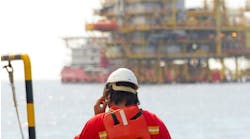Technical issues, currency movements raise costs of Equinor offshore Norway projects
Currency fluctuations are pushing up the costs of various Equinor-operated field developments across the Norwegian Continental Shelf.
The company operates 19 projects currently under development in Norway. In its proposed National Budget for 2025, the Ministry of Energy listed the status of 13 of these (either still in development or recently completed). They carry a combined estimated cost of NOK198 billion ($18.62 billion), from commencement through commissioning.
According to Trond Bokn, Equinor's head of project development, these projects have experienced a roughly 3% cost increase over the past year of NOK6.5 billion [$611 million], with an overall rise of NOK32.9 billion ($3.09 billion) since the plans for development and operation (PDOs) were issued.
Currency effects account for NOK12.4 billion ($116.5 billion) of this.
Two of the projects, Johan Castberg in the Barents Sea and Oseberg gas compression/partial electrification in the North Sea, have incurred a post-PDO increase of more than 20%.
At Johan Castberg, the FPSO is moored at the field with production set to start toward the end of the year. The cost hike for the project since last year is NOK2.2 billion ($207 million), due to a longer stay than anticipated of the FPSO at Aker Solutions’ Stord yard, currency effects and general cost rise issues.
Since the PDO, estimated costs have risen by NOK25.7 billion ($2.41 billion), with currency impacts accounting for NOK8.1 billion ($761 million) of that figure.
Oseberg gas Phase 2 and power from shore (OGP) involves partial electrification of the Oseberg Field Center and Oseberg Sør, and installation of a new compressor module at the field center.
Here, the cost escalation over the past year has been NOK1.2 billion ($113 million), and about NOK2.5 billion ($235 million) since the PDO.
Main factors have been longer delivery times for new transformers that were destroyed in a fire at Hitachi’s factory in Vaasa, western Finland in 2023, and delays caused by increased complexity. Planned commissioning has been pushed back from 2026 to late 2027.
Snøhvit Future in the Barents Sea involves adding onshore compression and electrification of Hammerfest LNG on Melkøya island.
Since the PDO, the cost has gone up by NOK1.9 billion ($178 million), much of this arising from the partners’ decision to change the design of an electric boiler due to safety concerns.



